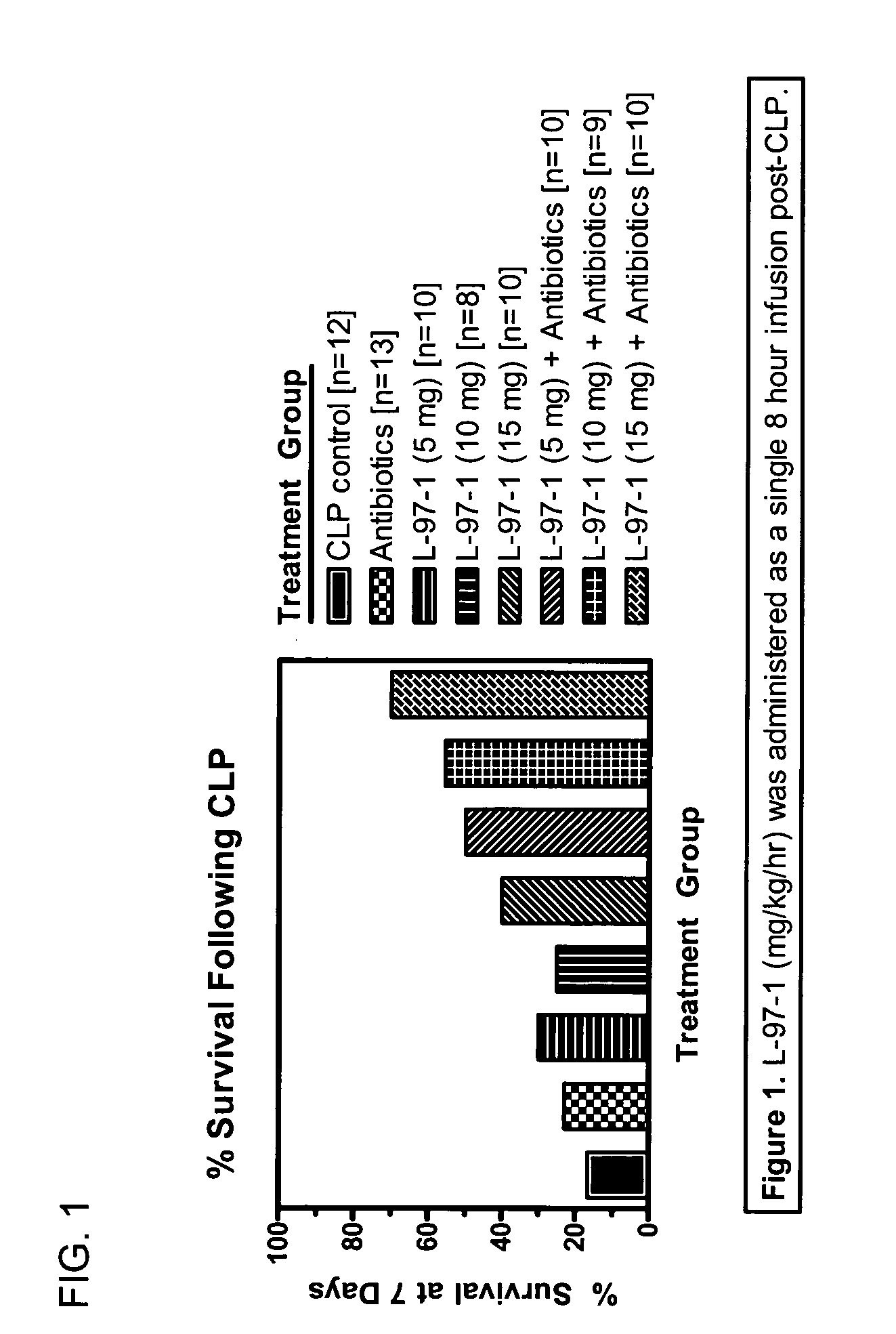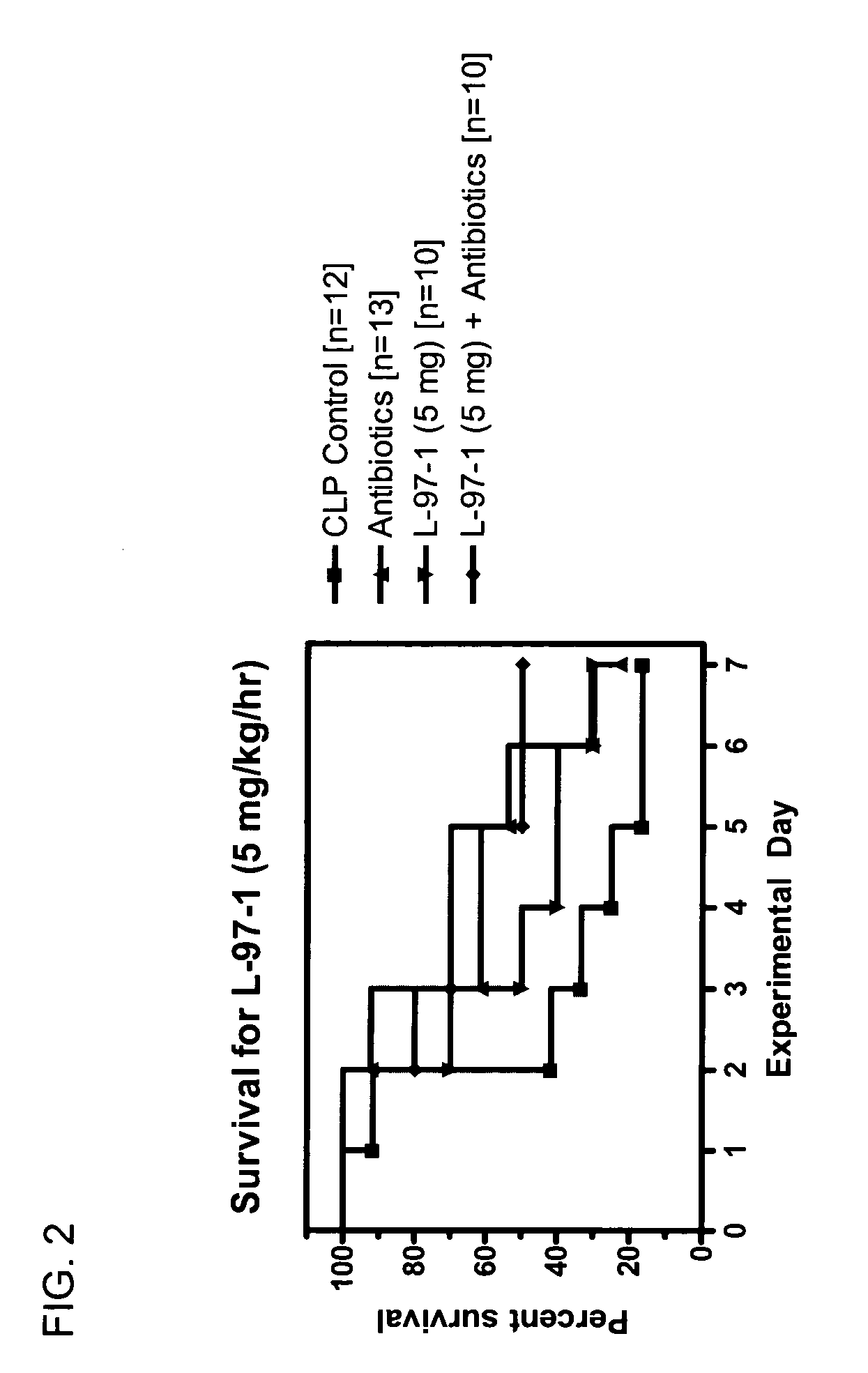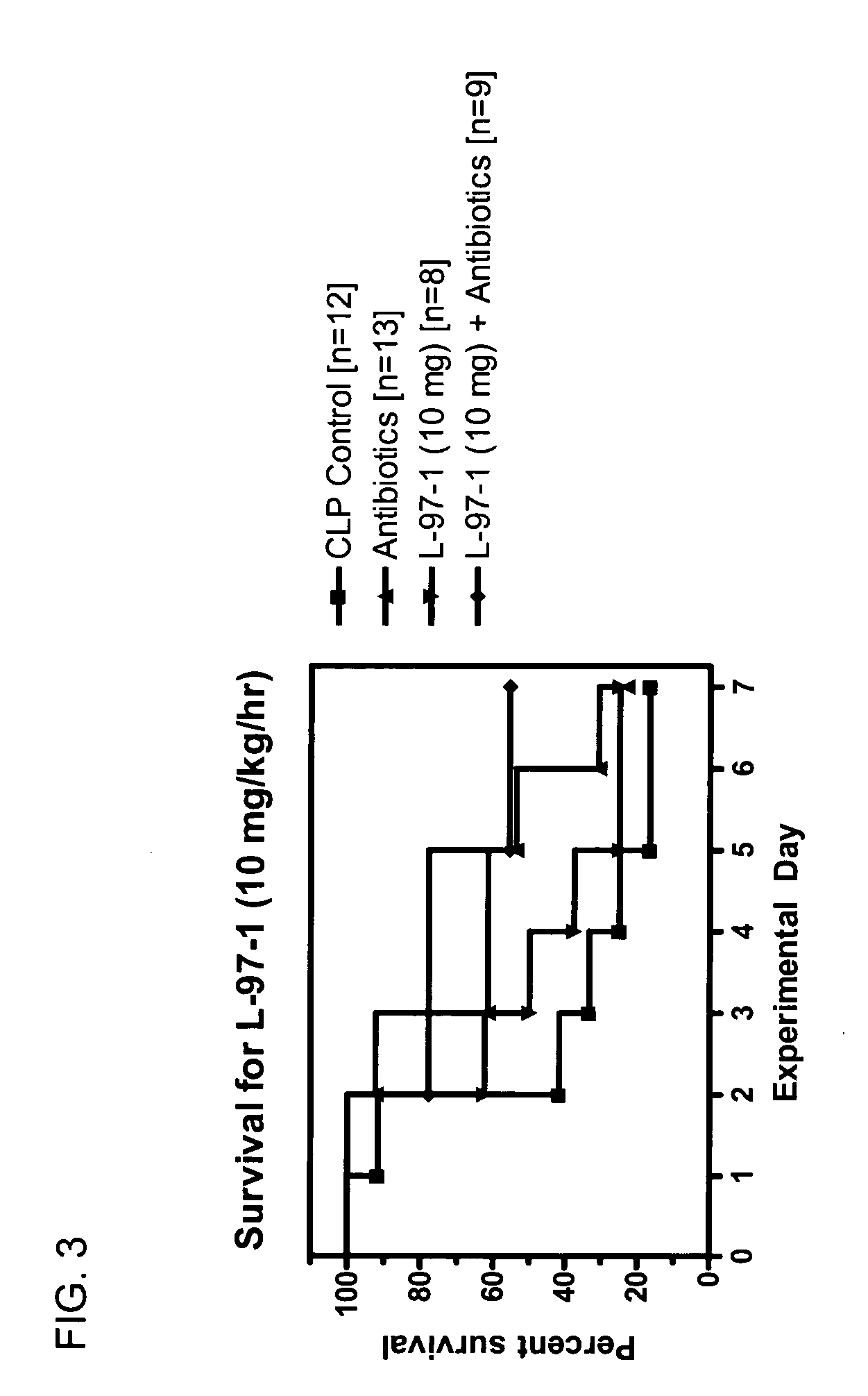Methods and pharmaceutical compositions for treating sepsis
a technology of sepsis and compositions, applied in the field of sepsis treatment methods and compositions, can solve the problems of low blood oxygen levels, organ failure and death, shock, etc., and achieve the effect of promoting the desired therapeutic respons
- Summary
- Abstract
- Description
- Claims
- Application Information
AI Technical Summary
Benefits of technology
Problems solved by technology
Method used
Image
Examples
example 1
L-97-1 Pharmacological and Pharmacokinetic Studies
A. In vitro Pharmacology Studies
[0059] L-97-1 is a small molecule (MW 519) and is water-soluble (10-3 M). L-97-1 is an analog of the known adenosine receptor antagonist bamiphylline. In vitro pharmacology studies (i.e., radioligand binding assays) were performed and the results support that L-97-1 has a high affinity for the human A1 AR (0.58 μM) and is highly selective for the human A1 AR versus human A2a and A2b ARs and the rat A3 AR (see Tables 1 and 2 below). In these studies, the affinity of L-97-1 for the human A1 AR was determined to be approximately 3-10 times that of bamiphylline (Table 1). L-97-1 was more selective for the human A1 AR than bamiphylline (Table 2). Bamiphylline bound to the human A2a AR (27 μM). L-97-1, however, did not bind to the human A2a AR (≦100 μM). Neither L-97-1 (≦100 μM) nor bamiphylline (≦100 μM) bound to the human A2b AR. The affinity of L-97-1 for the human A1 AR was close to the affinity of LP...
example 2
Evaluation of L-97-1 and Antibiotic Combination Therapy in Rat Model of Gram-Negative Sensis
[0083] Studies will be undertaken to determine if L-97-1 is an effective adjuvant therapy to antibiotics for the treatment of sepsis and early treatment of endotoxin- induced acute lung injury (ALI) and improves outcome and mortality (versus antibiotics alone). In a rat cecal ligation perforation (CLP) model of Gram-negative septicemia and endotoxemia, the effect of L-97-1 (and L-97-1 plus antibiotics, ampillicin plus gentamicin) on acute lung injury (ALI) at 24 and 72 hours and on mortality at 7 days following CLP will be investigated.
[0084] In the rat CLP model of septicemia and endotoxemia, at 5 hours post-CLP, endotoxin levels are increased and 60% of rats have blood cultures that grow Gram-negative rods (Escherichia coli and Klebsiella pneumoniae). Alexander et al. (1991) J Clin. Invest. 88:34-39. At 20 hours post-CLP all rats have positive blood cultures. Animals develop clinical sign...
example 3
Seven Day Survival Studies in Rat Model for Sepsis
Protocol for Cecal Ligation-and-Perforation (CLP) Model of Sepsis
[0098] Male Sprague-Dawley rats (200-300 g) received an intraperitoneal (ip) injection of sodium pentobarbital (50 mg / kg) prior to surgery. Surgery was performed after overnight fasting through a 2 cm midline abdominal incision using aseptic techniques. During surgery the cecum was ligated below the ileocecal valve with 3-0 silk. Two perforations (I cm apart) were made in the cecum with an 18-guage needle on it's antimesenteric surface. Before the bowel was inserted back into the abdomen and the incision closed, the cecum was gently squeezed until feces extrudes out. Post-operative fluid resuscitation was a 20 ml subcutaneous injection of saline. During surgery rats had a catheter surgically implanted intravenously and were sutured for continuous infusion of L-97-1 to begin after surgery according to the treatment protocols below.
Protocol for Treatment with L-97-1 ...
PUM
| Property | Measurement | Unit |
|---|---|---|
| systolic arterial pressure | aaaaa | aaaaa |
| time | aaaaa | aaaaa |
| time | aaaaa | aaaaa |
Abstract
Description
Claims
Application Information
 Login to View More
Login to View More - R&D
- Intellectual Property
- Life Sciences
- Materials
- Tech Scout
- Unparalleled Data Quality
- Higher Quality Content
- 60% Fewer Hallucinations
Browse by: Latest US Patents, China's latest patents, Technical Efficacy Thesaurus, Application Domain, Technology Topic, Popular Technical Reports.
© 2025 PatSnap. All rights reserved.Legal|Privacy policy|Modern Slavery Act Transparency Statement|Sitemap|About US| Contact US: help@patsnap.com



